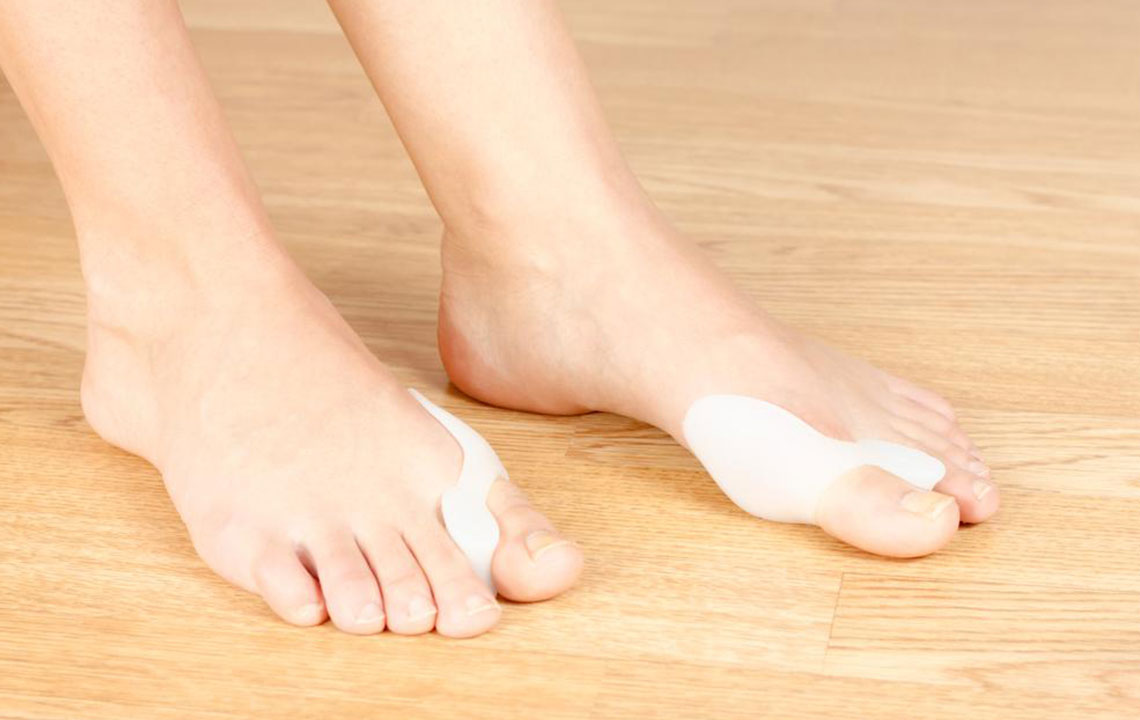Bunion Treatment – All You Need to Know

Bunions are a common condition among many people. You might have either experienced one or seen a foot that has a bunion. The medical term for bunion is hallux valgus. Bunions are formed when the bone or the tissue shifts out of place at the bottom joint of the big toe. This change is often a result of prolonged abnormal motion of the feet.
One of the most common causes of bunions is wearing the wrong kind of footwear for years. Excessive pressure on the big toe joint forces it to bend away, thus causing a lump at the joint. This lump or bunion is often very painful and requires immediate attention.
Are Your Shoes To Blame?
Bunions are mostly the result of the kind of shoes you wear. Shoes significantly influence the way we walk and might cause excessive pressure on the toes.
Stilettos are a common cause of bunions among women. Make sure you wear comfortable shoes. Avoid wearing stilettos every day or for prolonged hours as a precaution against bunions. It is a common condition among older women. Research suggests that women tend to develop bunions more often than men.
If your joints are flexible, your foot joints may adapt to all kinds of shoes. But if you have stiff joints, you are vulnerable to getting bunions.
Here are a few bunion treatments that are sure to help you.
Bunion Pads, Splints, And Shoe Inserts Help
If your bunion isn’t too painful, you might have developed it due to uncomfortable shoes. Switch to comfortable footwear immediately. Make sure that you wear shoes of the right fit and avoid high heels.
Orthotic specialists often suggest bunion pads, splints, and shoe inserts for relieving one’s feet of a bunion. However, if you have been advised to use these, you must take care that they don’t put pressure elsewhere on your foot.
These days, there are specially designed shoes with comfortable insoles and uppers. The structures of these shoes help relieve bunions by relieving the pressure off the affected joints of your foot. They help your foot regain its shape.
Avoid Putting Pressure On Your Big Toe
You must avoid activities that involve exerting pressure on your feet if you are susceptible to bunions. Avoid excessive swimming or cycling as precautions against bunions.
You should wear shoes that provide enough room for your feet. Choose shoes that have deep and wide toe boxes, flat or low heels and comfortable arch supports and soles. Avoid wearing high heeled shoes or narrow or tight footwear which put pressure on your toes.
Apply Ice To Ease Painful Bunions
If you experience a painful bunion, you may try easing the pain and discomfort with ice. An effective bunion treatment is wrapping a thin cloth around an ice cube and applying to your big toe joint for ten to twenty minutes.
Once you have applied ice, you may do a simple exercise. Elevate your foot till it is higher than your heart and then release. Repeat this exercise a few times to ease a painful bunion.
Use Arch Supports Or Custom Made Supports Inside Your Shoes
Another one of the most effective bunion treatment is Arch supports. These are available in the market for relieving bunions. You may also use bunion pads, or custom made supports to treat bunions. They act as supports or orthotics and are placed below the feet just behind the joint of the big toe.
Try using the best-suited support inside your shoes. Choose wisely so that the support distributes your weight properly while you walk and takes away pressure from the joint of your big toe.
If you experience a bunion, use felt patches around the affected area to prevent it from rubbing against your footwear. Wear airy and well-fitted shoes which ensure comfort while you walk.
Heating Pads And Warm, Gentle Foot Massages
You can also use heating pads as an alternate bunion treatment. Apply heating pads cautiously – be careful not to burn your foot. Apply the heating pad on and around the affected area.
If you have tired feet after prolonged walking or other activity, massage your feet, especially the area around the big toe. Give your feet adequate rest at regular intervals.
You can also dip your feet in the lukewarm water for ten to fifteen minutes. A warm foot bath will ease the pain. Try massaging your foot gently after the warm foot bath. Doing this will relieve the discomfort.
Medicines and Surgery
There are several over-the-counter medicines available for treating bunions. These include acetaminophen such as Tylenol. However, it is always advisable to first consult your doctor without delay if you have a bunion. They will be able to determine the cause of the bunion and the most appropriate treatment for it. Doctors will prescribe non-steroidal anti-inflammatory drugs such as Ibuprofen. Take the prescribed dosage.
Your doctor might think it’s necessary for you to undergo surgery if the bunion is severe. The surgery can be performed with local or general anesthesia depending on your condition.
Seek medical help immediately if you experience a bunion. Take the precautionary measures and implement the bunion treatment methods to prevent bunions.


